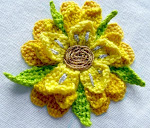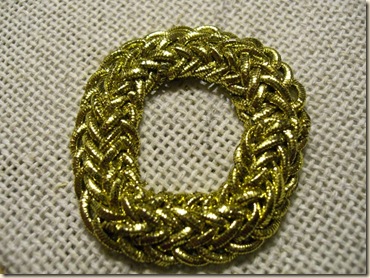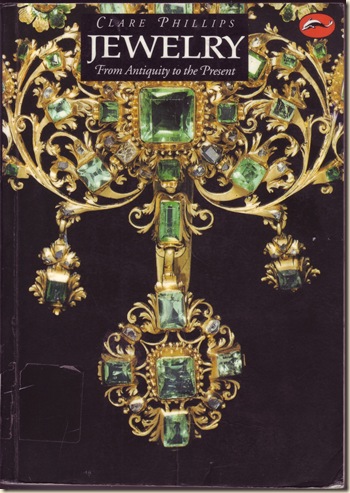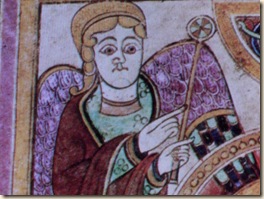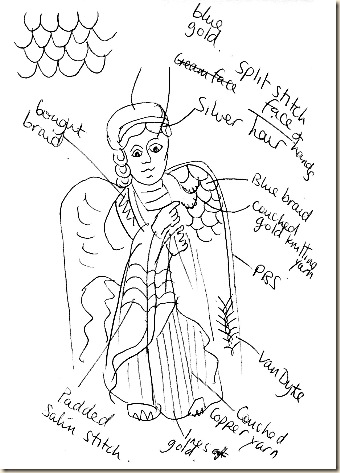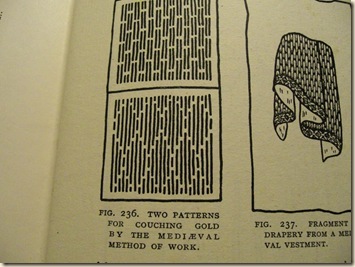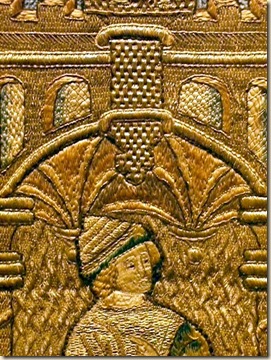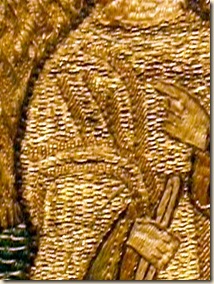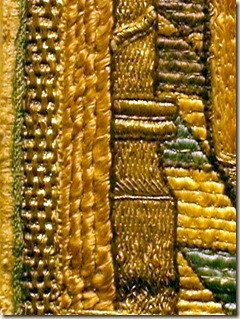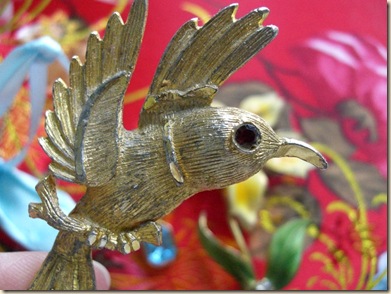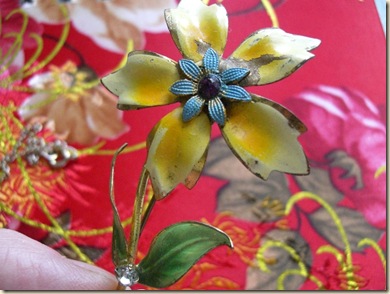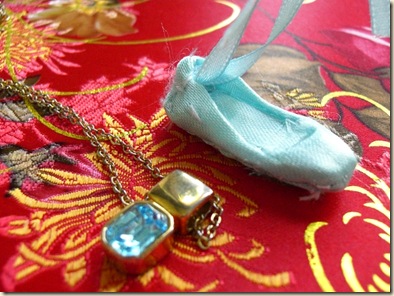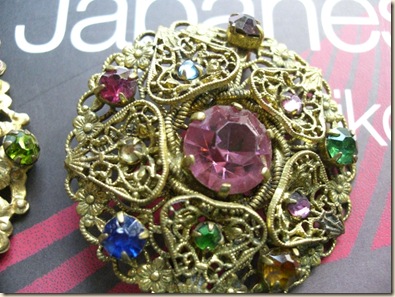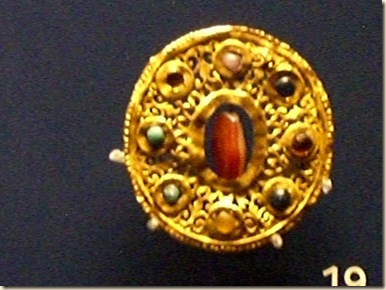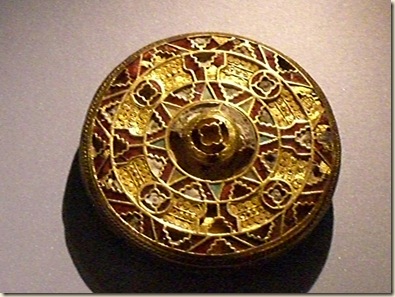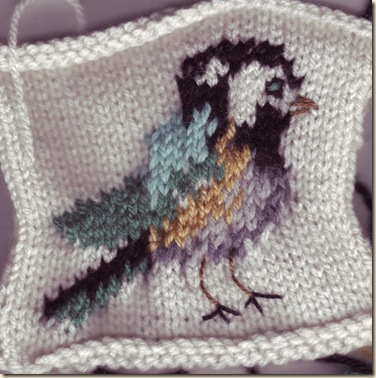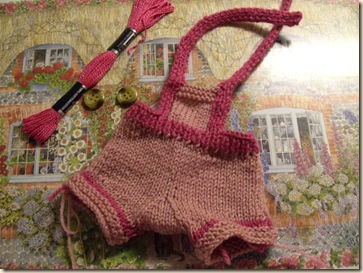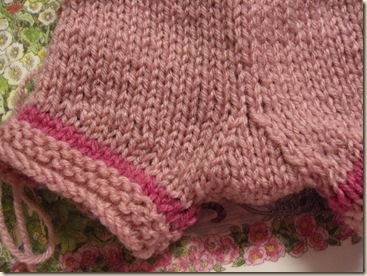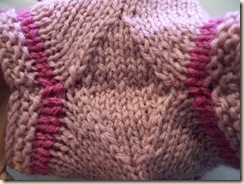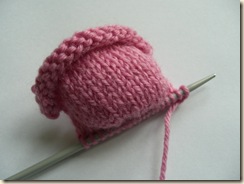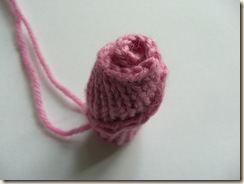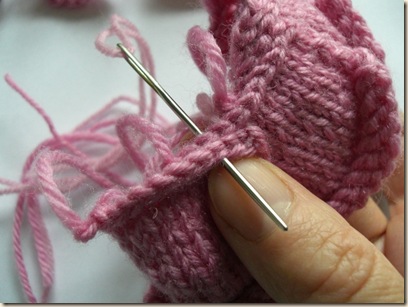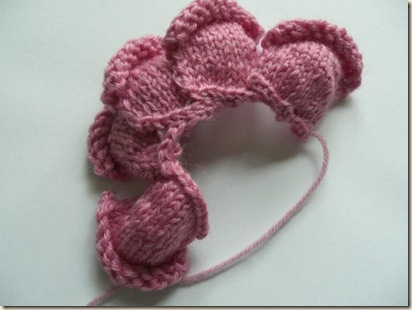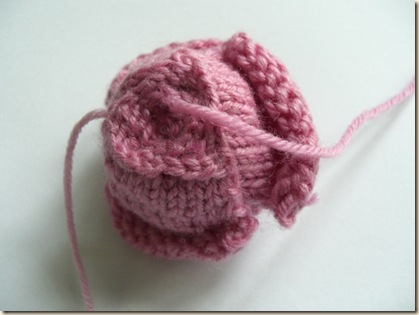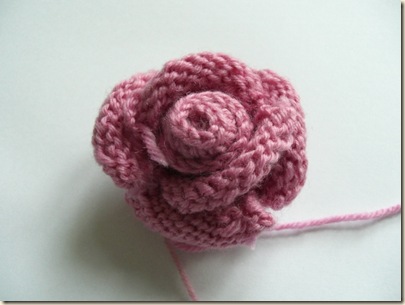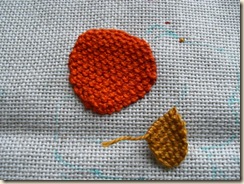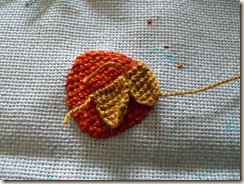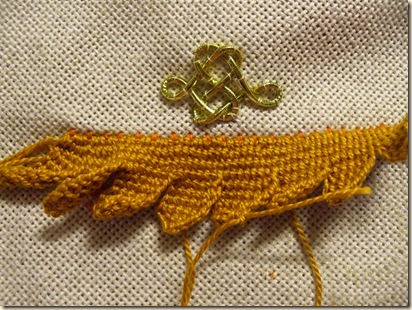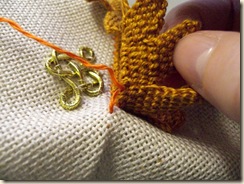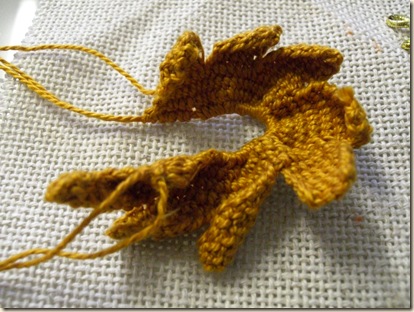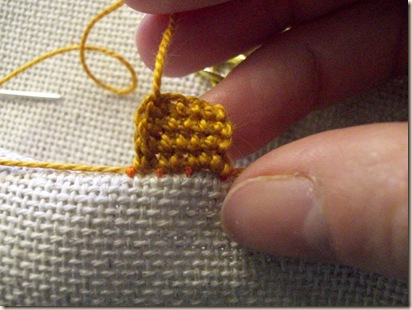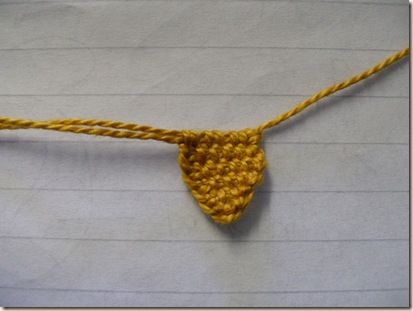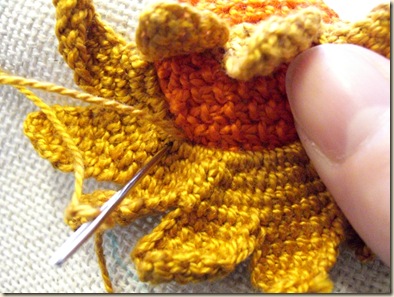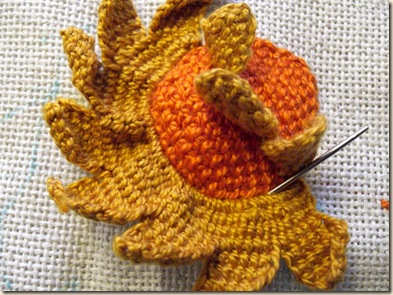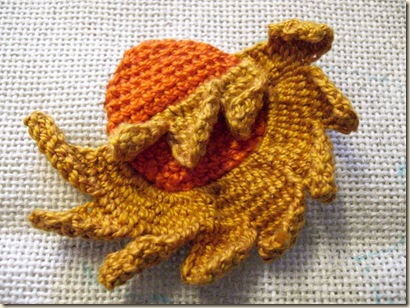I’m still working on that book I mentioned…it’s taking forever to complete, I have 4 more chapters…this post is pretty well on topic…
Jewellery and Plaited Braid Stitch
I haven’t had the chance to do anything further regarding Plaited Braid Stitch, other than a couple of quick experiments relating to the embroidered ring idea.
I made this swatch to see how tight I could make PBS take a curve, because The Ring is going to be made out of PBS if you recall.
As you can tell, I was aiming at a circle, with an invisible beginning and end.
I have to admit, I rushed it because I was eager to investigate one specific technical issue, and that was if I could make the join invisible.
I need to think about this a bit more and work out how to ‘Graft’ or ‘Kitchener Stitch’ the two ends together, like you do say, to join 2 rows of live stitches in knitting.
When I made the 3-d PBS braid I realised just how flexible this complex embroidery stitch can be. I think that opens up a lot of possibilities, hence the idea to make a ring.
It’s an idea that hasn’t withered on the vine exactly, but it’s in limbo because I had misplaced a huge bunch of stuff and feared it had all been thrown out in one of my big pre-Christmas clearouts. Thankfully, I found it the other day, along with some other little goodies I had stored up (see further on here).
Before I do write anymore about PBS, I have a new book to consider. If you’ve been following this strand of investigation, my travels are now taking me to Jacqui Carey’s new book ‘200 Braids to make’ and another book called ‘Creative Ropecraft’ by Stuart Grainger.
Embroidered Ring Idea
I think I’m going to need to get my soldering iron out after all. I don’t like the experiments I’ve done so far with silver coated cheapo wire. I bought three sizes thinking that would help, alas, as usual I want the overall design to be smaller and finer than my materials will allow. I used to make jewellery, well earrings actually, so I still have all my tools.
Anyway, I borrowed this wonderful book to help me and needless to say, its so amazing that I became a little lost in it and awestruck by the contents, especially the 16th Century Spanish necklace pictured on the cover. Don’t you just love the way it looks like it was made by human hands. Call them imperfections if you will, but I really think, by comparison, modern jewellery looks too machine-made and ‘clinically’ perfect. Speaking of very vintage jewellery…
I particularly like the early chapters relating to pre-history, late Bronze Age, early Iron Age items.
I’ll be talking more about that at a later date because it fits in with tracing the origins of a style, and the origins really do begin in the Bronze Age, when Wales and Cornwall were being mined for copper and tin, to be used as currency in the wider international Bronze Age world.
If you can’t wait for more information about that, just take a wander round to ‘The History of the World in 100 Objects’ a website run by the BBC in conjunction with a major British Museum exhibition. If you are able to, I suggest you listen to the podcast (15 minutes) of a mini lecture on the 4,000 year old ‘Mold Gold Ceremonial Cape’ found in a grave in North Wales near the huge Bronze Age copper mine called The Great Orne. This magnificent golden item of clothing is a thin as paper and was beaten from a single sizeable gold ingot. The workmanship and decoration is breathtaking. More about that later…
Incidentally the wonderful Neil Oliver, archaeologist and documentary-maker, recently covered this very significant mine in his series of programmes on Ancient Celtic Britain. Archaeology is a very exciting field these days and Neil Oliver is a particularly effective communicator.
Book of Kells
Then a funny thing happened, as I was rummaging through some drawers (looking for The Ring sketches) the other day, I found a W.I.P. I had begun over the holidays but couldn’t continue for one reason or another.
After investigating the 2-d knots in the Book of Kells for ages, I was inspired to embroider a primitive-looking little Celtic angel. The more I did in preparation for that idea the more I realised it was going to end up looking like my interpretation of Opus Anglicanum work.
Here is a rough sketch I made taking a template from the book called ‘Compendium of Celtic Crafts by Search Press.
Well of course I would really like to get into something like that, but I need to be honest with myself about how long it will take.
I suppose the thing that made me want to try it more than anything was going to Florence last summer and when I returned, comparing how close to the truth these diagrams were…
These are from Mrs Christie’s 1920 book, she may not have been great at guessing how Plaited Braid Stitch was executed in historical times, but she certainly knew her Opus Anglicanum stitchery.
It was going to be a small piece, that would grow exponentially, as I believe a lot of that kind of artwork was carried out.
But somehow it ended up larger than my frame and the whole thing became a little head-achy. However, around the angel I did manage to incorporate some Saxon knotwork patterns that I found on sword handles. I was excited to find ways to incorporate this kind of embellishment and as you can see, I have temporarily couched the metallic cord down, whilst I make sure all my overs & unders are correct. If you notice also, the knot pattern is of particular relevance, as its exactly the same as the central area of a Turks Head Knot.
I liked how this was working out, mounted on rich green velvet. I was going to stitch the angel onto linen first, then cut it out and attach it as a slip to the velvet.
However, to refresh that idea, I now have a good set of photographs I took at the Ashmolean recently of Opus Anglicanum embroidery.
Its not a very big piece but in extremely good condition and quite astonishing for its complexity, as every single tiny bit is so intricately worked.
See how all the wooden beams, bricks, stones and flanks are each given a different treatment. The gold thread they used was staggeringly fine.
Brighton Treasures
Anyway, we went to Brighton and I bought some more bits and bobs…
You can see a lovely tin flower brooch (I collect them), a sweet little bird whose gold has rubbed off in parts. I’m not bothered about that because I intend to go over him with a gold permanent marker that’s good for plastic, glass and metal. Then there is that lovely little blue stone that goes really well with my eyes.
I bought the bird because I think the design works really well and reminds me of the Saxon bird motifs, with his fiery ruby-red eye, which you cannot really see in this image. Saxon birds always look a bit aggressive and ready to strike, I liked the pose of this little fellow.
I didn’t mind that his tail feathers were a little bashed up – I unbent them when I got home. I look to check the eye and beak are intact and I also make sure the clasp is in good order. It’s a wonderful design for a little goldwork embroidery….(oh no, there I go again!!)
These tin flowers always look a bit weather-worn but I think that’s nice. Again, I had to do some very delicate unbending when I got back…
The miniature ballet shoe is my own creation, it’s only a prototype at this stage because it too was a sketch that had been hitherto mislaid. I was pleased the design finally worked out. It has cardboard in the sole to support it and is 1 inch in length. I think its hard to make things smaller than an inch because you can’t really get your finger in there to shape it. When I make it next time, the insole will be white and the upper will have a facing or another slither of card to add definition. To make it I used exactly the same technique you would to make a life-size ballet shoe. I found a good internet tutorial of how to do that. I’ll post the link.
I buy all these things from the same lady stall-holder who seems to love all the things I do. I asked her this time for ‘good coloured glass and good fake pearls’.
I suppose I am one of her ‘regular customers’ you might say and here is another brooch I bought from her last year…
This delightful thing is not a million miles from the Saxon designs of old, as seen in the pictures beneath it (especially the blurry one). I don’t necessarily buy these things to wear them but just to stare at them and be transported…
Oh dear me, I have been knitting again!….I don’t know, it seems I just cannot put my needles down. So thinking about Saxon birds and wanting to explore the possibility of translating a cross stitch pattern into knitting, I decided to make this using stranded intarsia technique..
He’s unblocked and there are a thousand stands to weave in on the back but somehow I like this little chap. Cross Stitch patterns being basically digitised can be translated into knitting or beadwork, as we know. The trouble with knitting it though, is that you need to work the pattern stitches on the purl side too, which feels a little weird but my solution was simply turn the pattern upside down.
cya !

